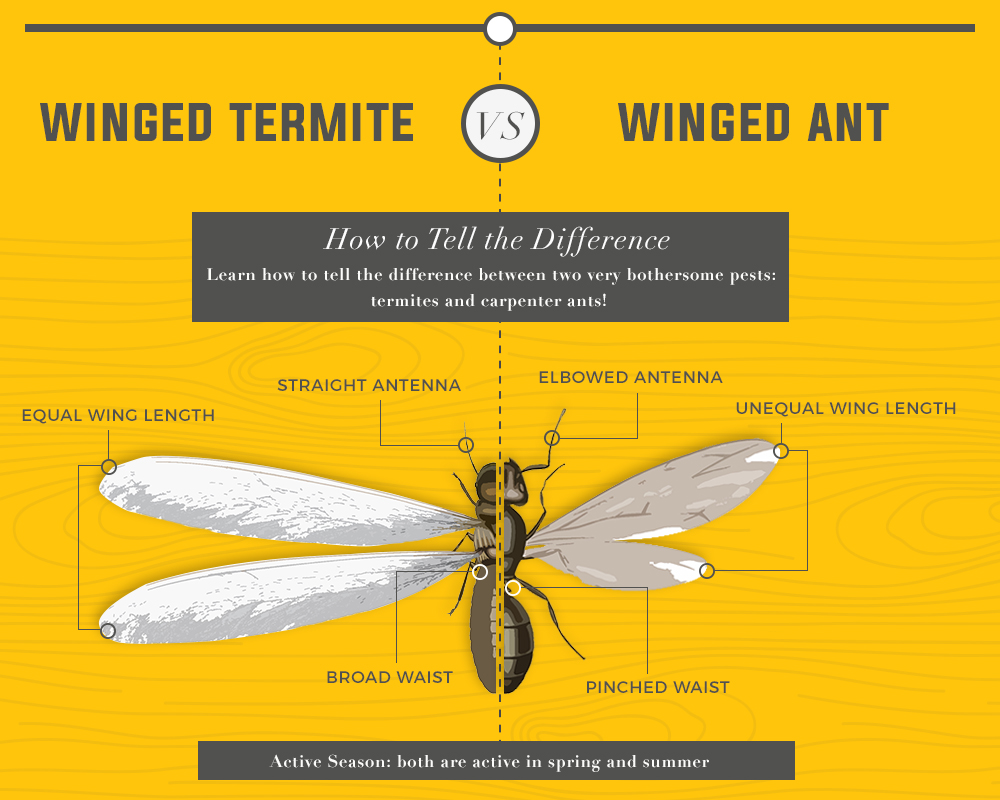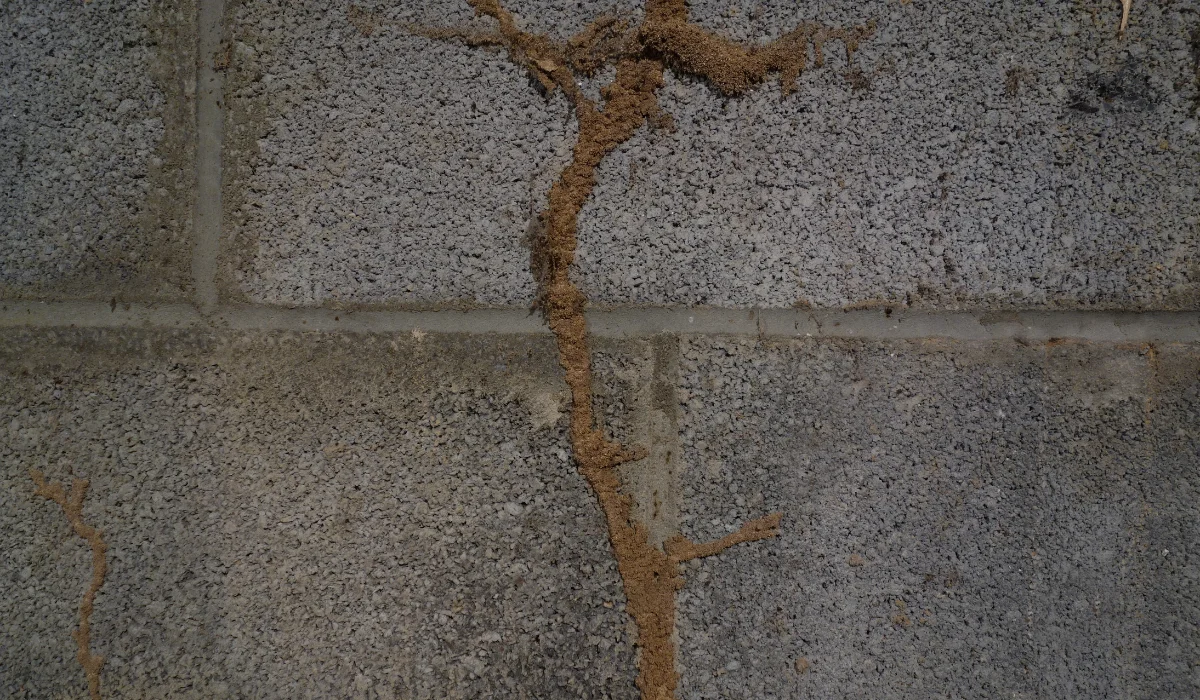It’s a sight that makes every homeowner nervous: a sudden swarm of winged insects around a window or light fixture. Your immediate question is likely, "Is this a problem?" The answer depends entirely on whether you are seeing flying ants or flying termites.
Getting this identification right is one of the most important things you can do for the health of your home. While one is a temporary annoyance, the other is a clear warning sign of a potentially devastating infestation. This guide provides a simple, reliable 3-step process to tell them apart.
Key Differences at a Glance
Flying Ants (Alates): Considered a nuisance pest. They have a pinched waist, bent antennae, and unequal-sized front and back wings.
Flying Termites (Swarmers): Considered a wood-destroying threat. They have a broad waist, straight antennae, and four wings of equal size.
[Here: An expert from a pest control company clearly points out the differences between a live flying ant and a flying termite.]
Why Correct Identification Is Crucial
A swarm of flying ants (called alates) is part of a natural event called a "nuptial flight," where new queens and males from an established colony leave to form new nests. As the University of Minnesota Extension notes, these ants are typically not a threat to your home's structure.
A swarm of flying termites (called swarmers), however, is a sign that a mature termite colony is nearby. This colony could be actively feeding on your home's wooden structure, and these swarmers are its attempt to expand and create new colonies in or around your property.
The 3-Step Visual Identification Guide
To distinguish between the two, you don't need a microscope—just a close look at three key body parts.

Caption: To correctly identify the insect, carefully examine its waist, antennae, and wings.
Step 1: Examine the Body Shape (Waist)
Flying Ant: Has a very obvious, narrow, "pinched-in" waist, creating a distinct separation between the thorax and abdomen (like an hourglass).
Flying Termite: Has a broad, straight body with no visible waist. The thorax and abdomen are fused together, giving it a uniform, rectangular shape.
Step 2: Look at the Antennae
Flying Ant: Has antennae that are bent or "elbowed" at a sharp angle.
Flying Termite: Has antennae that are completely straight and may look like a string of small beads.
Step 3: Compare the Wings
Flying Ant: Has two pairs of wings (four total) that are unequal in size. The front pair is noticeably longer than the back pair.
Flying Termite: Has two pairs of wings that are both equal in length and size. They often appear milky-white and are much longer than the body.
Beyond the Insect: Other Telltale Signs
The context in which you find the insects can also provide vital clues.
Discarded Wings: This is a classic sign of termites. After swarming, termites land and twist off their wings, as they will never need them again. Finding small piles of identical-looking wings on windowsills, floors, or in spider webs is strong evidence of a termite swarm.
Mud Tubes: Subterranean termites, the most common type in North America, build pencil-sized tunnels from mud and saliva to travel from the soil to the wood in your home. According to the U.S. EPA, finding these tubes on your foundation walls or in crawl spaces is a definitive sign of an active termite infestation.
Damaged Wood: Termite-damaged wood sounds hollow when tapped and often has honeycomb-like tunnels inside, running with the grain.

Caption: Mud tubes are termite highways and a clear signal to call a professional.
What to Do After You Identify Them
Your next steps are critical and depend entirely on your findings.
If They Are Flying Ants:
Relax. Your home is not in structural danger.
Clean Up. Use a vacuum cleaner to easily remove the ants from inside your house.
Seal Entries. Once the swarm has passed, find and seal the cracks or holes they used to get inside.
If They Are Flying Termites:
Act Immediately. Do not dismiss the swarm as a one-time event. It is a sign of a much larger, hidden problem.
Gather Proof. If you can, collect a few of the insects or their shed wings in a sealed bag for a professional to examine.
Call a Professional. This is not a DIY job. Contact a licensed and insured pest control company for a thorough inspection and treatment plan. Reputable sources like the Pest-Ex company strongly advise against trying to treat termites yourself.
By taking a few moments to perform this simple 3-step check, you can determine the nature of your pest problem and take the correct, decisive action to protect your home.
